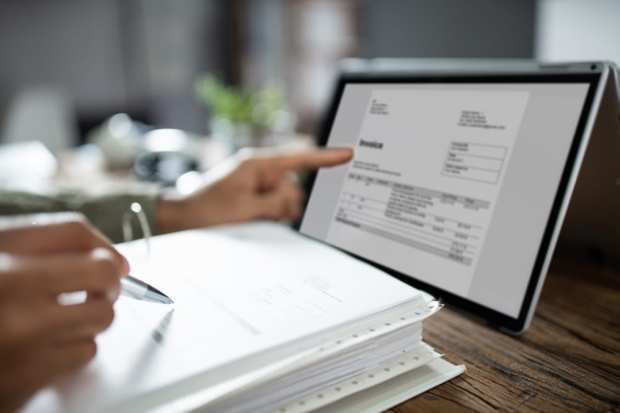How New B2B Payment Models Tackle The Buyer-Supplier Conflict

While 2020 has been a monumental year for B2B payments digitization and innovation, plenty of friction still exists in the way corporate buyers pay their suppliers.
One of the most prominent culprits behind that friction is the intrinsic conflict that buyers and suppliers face in their payment flows. Corporates want to delay payment as long as possible in order to better manage cash flow, while suppliers are pressed to accelerate accounts receivable to strengthen their own cash positions. In the midst of the pandemic, with cash crunches intensifying, this conflict has only proliferated throughout the supply chain.
A variety of B2B payment tools have stepped up their efforts to address this friction. Solutions like commercial and virtual card products, for instance, assure buyers the ability to extend capital float while accelerating payment to vendors.
But there are other ways beyond the payment mechanism itself that can help to remedy this conflict between corporate buyers and vendors. Speaking with PYMNTS, Adrian Floate, managing director of Australia-based Cirralto, explored some of the emerging payment models that have the potential to combat the pain of late payments and strengthen cash flow on both ends of a B2B transaction.
The Rise Of BNPL
Buy now, pay later (BNPL) had a big year in the consumer payments world, particularly as shoppers flocked online and gained access to integrated BNPL offerings right at the point of sale. The BNPL and pay-by-installment models are proliferating, but according to Floate, “there continues to be a substantial gap in the B2B financial services market” when it comes to offering such integrated and flexible payment options.
As B2B eCommerce gains traction, the opportunity for consumer-like payment models will continue to grow, too. Today, the implementation of trade credit is the closest mechanism the B2B payments landscape has to a BNPL model. It can indeed be a valuable tool, enabling corporate buyers to make a purchase without having to immediately let go of capital.
Yet the current trade credit landscape comes with significant challenges, especially for the supplier, with Floate pointing to the requirement for vendors to take on the financial risk until after an invoice is actually paid.
With B2B FinTech innovation accelerating, there are new opportunities for both buyers and suppliers to take advantage of the BNPL and pay-by-installment models that remedy some of that legacy friction. Third-party service providers that can sit between the buyer and supplier, for example, facilitate a payment delay for the buyer while taking on the trade credit risk for the supplier.
Further, when invoices do go unpaid, technology has the opportunity to support buyers’ need to establish a payment plan, and suppliers’ need to get paid.
“An intent-to-pay framework incorporated into advanced software will allow overdue payments to be scheduled in installments, which gives businesses more flexibility in settling overdue debt and certainty in debt recovery,” Floate said.
New Payment Models Emerging
While the B2B payments landscape is taking a page out of the B2C world’s book when it comes to adopting new payment models, other paradigms are emerging that are built to tackle the unique pain points of business-to-business transactions not always seen in the consumer world.
Today, Floate said, there are three key factors that drive delayed supplier payments: inconvenient and non-optimized payment processes, including the need for manual invoicing and paper check processing; errors in data entry associated with manually keying in bank account or credit card details; and a failure to adequately integrate payment workflows within the rest of the back office.
But as B2B FinTech continues to evolve, new payment workflows will surface to address these issues.
Floate pointed to the emergence of “workflow payments,” for example, which support pre-authorization of credit cards that automatically initiate a payment when goods are delivered, service is completed, or some milestone within a B2B contract is achieved. This not only provides speed and assurance to suppliers in receiving payment, but strengthens security for corporate buyers who don’t have to share their credit card details over the phone or email.
In addition to new payment models coming to fruition, B2B FinTech innovation is also driving efficiencies in the post-payment workflow, especially when it comes to reconciliation.
Greater support for integration with third-party platforms like accounting and ERP solutions are not only valuable to buyers and suppliers that seek visibility and data related to the transaction itself, but, as Floate noted, that data integration can then feed back into other systems like inventory, warehousing and procurement to drive more holistic and seamless operations across all back-office functions.
Looking ahead towards 2021 and beyond, Floate said he sees “unprecedented opportunities” to accelerate and optimize B2B payments through the adoption of new FinTech solutions and payment models. Driving progress will be key not only to supporting the health of organizations’ own cash flows, but to the broader market.
“These FinTech payment innovations will drive economic growth through quicker and streamlined B2B transactions and improve cash flow,” he said, “which will, in turn, bolster the economic resilience of businesses.”